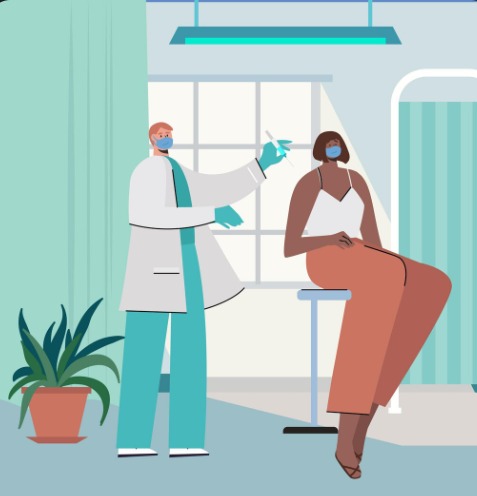In Union, New Jersey, vein care follows a structured process designed to help patients understand their condition and the available options. A vein doctor begins with a detailed medical history and a physical examination focused on the legs. This is followed by diagnostic imaging to assess vein health and blood flow.
Accredited facilities ensure that treatments are performed under strict safety standards. Minimally invasive treatments can address varicose veins, spider veins, and other venous disorders without lengthy recovery times. Patients are guided through each step, from diagnosis to follow-up, ensuring accurate assessment and care tailored to their individual needs.
How Vein Care in New Jersey Works from Start to Finish
Understanding how vein care operates in Union, New Jersey, begins with knowing the sequence of steps from initial consultation to recovery. Patients typically start at a vein clinic for a consultation with board-certified vascular surgeons or vein specialists. The process often involves discussing symptoms like leg pain, swelling, or skin changes, followed by diagnostic imaging such as a duplex ultrasound or other vascular imaging.
The goal is to diagnose conditions like varicose veins, venous insufficiency, or to diagnose or rule out deep vein thrombosis (DVT). While DVT can be identified through diagnostic testing, treatment for this condition is referred to the appropriate specialist, as vein clinics like Metro Vein Centers focus on alternative treatments for other venous disorders. Once a diagnosis is confirmed, minimally invasive treatments—such as radiofrequency ablation, foam sclerotherapy, or other available options—may be recommended based on the clinic’s treatment offerings.
Patients may also receive guidance on short-term measures like compression stockings and light activity after treatment. For long-term vascular care or management of unrelated conditions, referrals are provided to appropriate specialists.
Accredited Vein Clinics and Safety Standards
An accredited vein institute in Union must meet strict criteria for patient safety, cleanliness, and treatment accuracy. Accreditation ensures equipment meets medical standards and that vascular specialists and physicians have extensive training. It also confirms that board-certified vascular surgeons follow up-to-date treatment guidelines.
Facilities must show protocols for infection prevention, handling serious complications, and monitoring vein health during treatment. Accreditation is essential for identifying a trusted vein clinic near patients seeking care for varicose veins, spider veins, or other vein-related concerns.
The First Step – Medical History and Physical Examination
The consultation starts with a review of symptoms such as leg discomfort, swelling, or ulcers. The physician checks vein walls, valves, and leg veins to detect venous insufficiency or other vascular issues. Questions may focus on lifestyle, previous vein problems, family history, or vascular conditions such as peripheral artery disease.
Vein specialists also assess for risk factors like blood clots or aneurysms, ensuring any condition that might require urgent or specialized care is noted before starting treatments.
Diagnostic Testing
Common tools include duplex ultrasound to track blood flow through blood vessels and to measure the efficiency of vein valves. Other vascular imaging may be used when necessary to diagnose structural vein diseases or related conditions. This step helps identify bulging veins, tissue damage, or reduced blood flow in the legs. It also aids in detecting DVT, which vein clinics can diagnose or rule out, but for which ongoing treatment is referred to the appropriate provider.
Treatment Options for Varicose and Spider Veins
Vascular surgeons and vein specialists may recommend several minimally invasive treatments for varicose veins or spider veins, based on the clinic’s treatment offerings:
- Radiofrequency ablation: Uses heat to close faulty veins.
- Foam sclerotherapy: Targets small and medium veins.
- Adhesive closure: Seals the vein with medical adhesive (available only if offered by the clinic).
- Compression therapy: Supports healthy veins and reduces swelling; often recommended alongside minimally invasive treatments for personalized care.
These treatments address vein concerns without invasive surgery and allow most patients to resume normal activities quickly.
Estimated Recovery Times for Common Vein Treatments in Union, NJ
| Treatment Type | Average Procedure Time | Return to Normal Activities | General Risk Level of Minor Complications |
| Radiofrequency Ablation | 30–45 minutes | 1–2 days | Low |
| Foam Sclerotherapy | 15–30 minutes | Same day | Low |
| Adhesive Closure | 20–30 minutes | 1–2 days | Low |
| Compression Therapy | Ongoing | Immediate | Very low |
Insurance Coverage and Required Documentation
Most insurance plans cover medically necessary vein care for conditions like chronic venous insufficiency that cause pain, swelling, or skin changes. Patients should bring ID, insurance cards, prior test results, and a list of current medications. This helps ensure faster claim approval and accurate diagnosis.
Supporting Recovery and Preventing Complications
After minimally invasive treatments, patients are generally advised to follow short-term measures such as wearing compression stockings, staying moderately active, and elevating their legs to aid blood flow. Clinics like Metro Vein Centers provide initial recovery guidance, but ongoing or unrelated vascular management may be handled by other healthcare providers.
Final Words
Board-certified vascular surgeons and vein specialists in Union focus on treating vein concerns through accurate diagnosis, advanced treatments, and preventive strategies. Addressing venous issues early can reduce the risk of complications like infection or bleeding. Careful evaluation helps protect local tissue health and maintain comfortable, functional legs.
FAQs
1. What is the most common cause of varicose veins in New Jersey patients?
Many cases develop from weak vein walls and faulty valves, which prevent blood from moving efficiently. This leads to bulging veins, discomfort, and sometimes skin changes. Genetics, age, and prolonged standing can increase the risk.
2. How do vein doctors diagnose chronic venous insufficiency?
A board-certified vascular surgeon or vein specialist typically uses duplex ultrasound to measure blood flow and check vein valves. This helps detect pooling of blood in the legs and confirms if venous insufficiency is present before recommending treatment.
3. Can untreated vein disease cause serious complications?
Yes, untreated vein disease can lead to ulcers, bleeding, or blood clots. In severe cases, venous disorders may affect the surrounding tissue. Early diagnosis and appropriate treatments help prevent these outcomes.



